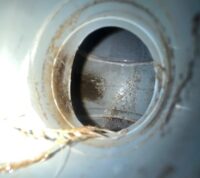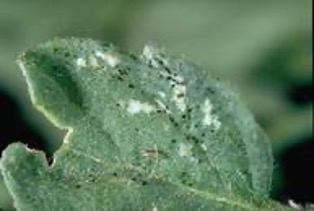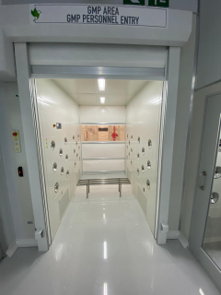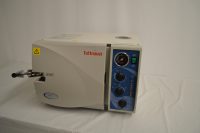This is the fifth in a series of articles designed to introduce an integrated pest management framework for cannabis cultivation facilities. To see Part One, an overview of the plan and pest identification, click here. For Part Two, on pest monitoring and record keeping, click here. For Part Three, on preventative measures, click here. For Part Four, control methods, click here. Our final chapter, Part Six, discussing emergency response, comes out next week to wrap it all up.
This is Part 5: Pest Control – Taking Action
Previous chapters have covered the many preparations you can take to protect your facilities from pest attacks and outbreaks before they get started. This chapter will summarize the concepts of pest control thresholds and the actions you can take for the painful event when you surpass those limits (and various examples). The Integrated Pest Management (IPM) recommendations provide you with a framework for these plans.

Preventative actions are part of your regular site operations; in other words, they are how you avoid problems before they happen. Just to hit this action one more time: cleaning must be fundamental to your facility. Water sanitation and changing filters must be done on schedule and frequently to avoid biofilm build up and nasty self-multiplying eco-systems.
For each of the rooms in your facility, identify the acceptable tolerance level for each type of pest that you may encounter. Define the intervention levels per room: preventative, direct action and escalated direct action. Follow your predefined procedures and defend your facility. Let’s cover high, medium and low tolerance example responses.
High Threshold for Tolerance
For example, the impact on your plants, your profits and your yields from the discovery of a white fly fluttering inside of one of your flower rooms may be very small. If this presence is late in your harvest cycle, your tolerance of this discovery may be very high. Your team could take preventative actions to clean the room more aggressively or to check your traps more frequently, but you are probably not going to want to invest in aggressive actions at that time in the harvest cycle.
Move from passive observation to the shake test. With sticky traps in place, shake or brush your plants. Do you see the bug counts increase on your test sheets?

As that infestation grows, you may set a threshold for direct action (i.e. 5-10 flies per trap per week). If you reach that level, implement a treatment action with a non-chemical microbial biofungicide to stop growth in the roots or neem oil as a direct chemical action.
When you reach your escalated threshold of 10-20 flies per trap or direct plant damage is apparent, an infestation is more serious. In that event, you may choose to take steps to directly reduce the pest population with knock down sprays of approved direct chemical pesticides like citric acid or insecticidal soaps. Be sure to use your Personal Protective Equipment (PPE) for breathing and contact safety if you get into this situation.
Medium Threshold for Tolerance
Depending on the timing in your harvest cycle, the discovery of fungus gnats in your grow room may trigger a medium level alarm for you. Is the location, a small example with a minimal frequency? Is this addressable with additional attention to cleaning the area and longer dry periods in the irrigation or is this the beginnings of an infestation? Fungus gnats feed off of fungus or organic matter in soil triggered from an overly moist root environment. You may choose to react with immediate cleaning at the first existence in a room. Or you could set your “Medium” level alert status to be additional sticky trap distribution at the first visible gnat. If those counts reach 10-20 gnats per sticky trap per week, begin your foliar spray regimen with Zerotol or the equivalent.

If these counts do not respond to your treatment, meaning that the next sticky trap count reaches beyond 20+ gnats per trap or visible direct plant damage, then institute your root drench protocol with a solution of BActive 1-2 times per week until the problem is under control and the counts are reduced. If the growth continues, look to approved pesticides in your area (as an example, AzaGuard Asadirectin).
Low Threshold for Tolerance
Alternatively, you may have a unified air circulation system due to facility limitations. Your air circulation may be shared across all of your mother plants, clones, veg and flowering plant areas. In that case, any presence of an airborne fungal infection like powdery mildew would have a very low tolerance of acceptance. Selective de-leafing of the infection and increased airflow are your first defense. Any visible presence beyond that would trigger a low threshold alert and immediately start a preventative action, such as carefully removing the infected plant material much wider than a few leaves and treating the area with foliar sprays like Zerotol (hydrogen peroxide plus).
If the penetration continues or expands, treatment would escalate to minimal risk pesticide follow up and observation. Chemical oils or citric acid might be in your mix in this case.

Finally, if repetitive treatments once a week are not turning the tide, increasing to once per day or even once per ON/OFF lighting cycle until the infection is controlled. At this point, you may decide to strip the room down and start over. Clearly the choice to “throw in the towel” is a total loss of the crop, but it may be the best option relative to minimal yields and failed flowers that will not sell.
Pest Control Actions
Our Integrated Pest Management recommendations paper gives you examples of what to consider for plans with white flies, fungus gnats, root aphids, powdery mildew and biofilm on plumbing or surfaces. These follow the preventative action, direct action, escalated direct action and pesticide approaches for each example. These are options to plan for water sources, root treatment, tunneling, crawling and flying phases.
In summary this week
As covered, preventative measures are your best defense. Hire expert consultants and plan these well. Escalate your response based on your scouting activity and your plan. Add your sticky traps, de-leafing, root drench, foliar sprays or knock down sprays as defined by your pest population control actions document.
For more detail on each of these treatments, you can see examples for your integrated pest management procedures in our complete white paper for Integrated Pest Management Recommendations, download the document here.
In our final chapter, Emergency Response, we will review control thresholds and example plans for a range of problems from biofilm build up to white flies and more.
Our final chapter after will describe emergency response framework and reviewing your complete plans. See you next week.


















